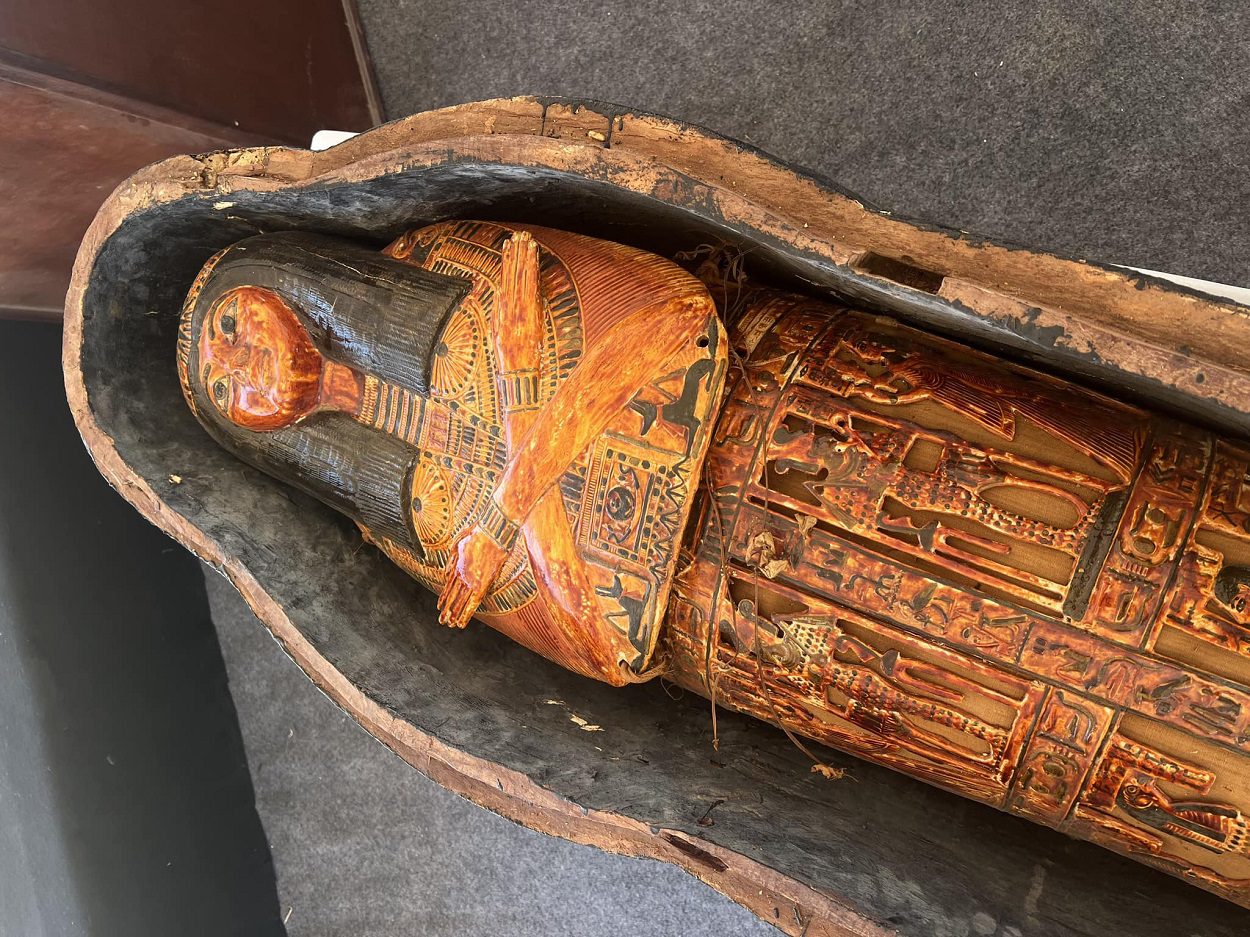The Egyptian Ministry of Tourism and Antiquities have announced the discovery of a New Kingdom cemetery at the site of Tuna el-Gebel, located in the Minya Governorate, Egypt.
Tuna el-Gebel served as the necropolis for Khmun, also known as Hermopolis Magna. The site contains Egypt’s most extensive Greco-Roman necropolis, with origins tracing back to the New Kingdom and continuing through to the Roman Period.
A recent archaeological mission led by Dr. Mostafa Waziri has uncovered a cemetery containing the burials of high-ranked officials and priests from the New Kingdom (1550 – 1070 BC). The researchers excavated numerous rock-cut tombs, in which burials were found intact within stone and wooden sarcophagi.
Numerous funerary offerings were also recovered, such as amulets and jewellery, precious stones, gold objects, as well as wooden and ceramic Ushabti statues representing high royal officials such as “Jehutymes,” who held the title of supervisor of bulls of the Temple of Amun, and “Nani,” a singer of Amun.

According to the researchers, the symbols and inscriptions found on these artefacts provide confirmation that the burials were associated with the upper echelons of the administrative and priestly classes during the New Kingdom in Upper Egypt.
The team also discovered the first complete papyrus discovered at the site, measuring between 13 to 15 metres in length. The papyrus refers to the Book of the Dead, an Ancient Egyptian funerary text used from the beginning of the New Kingdom that contains of a number of magic spells intended to assist a dead person’s journey through the Duat, or underworld, and into the afterlife.
“It is a discovery of enormous importance that will enrich our knowledge of this historical period. I deeply thank the entire team for their hard work and dedication, which today allows us to reveal this magnificent New Kingdom cemetery to the world, said Dr. Fahmy.
The papyrus will undergo a meticulous restoration process and will later be exhibited in the Grand Egyptian Museum, currently under construction near the pyramids of Giza.
Ministry of Tourism and Antiquities
Header Image Credit : Ministry of Tourism and Antiquities







